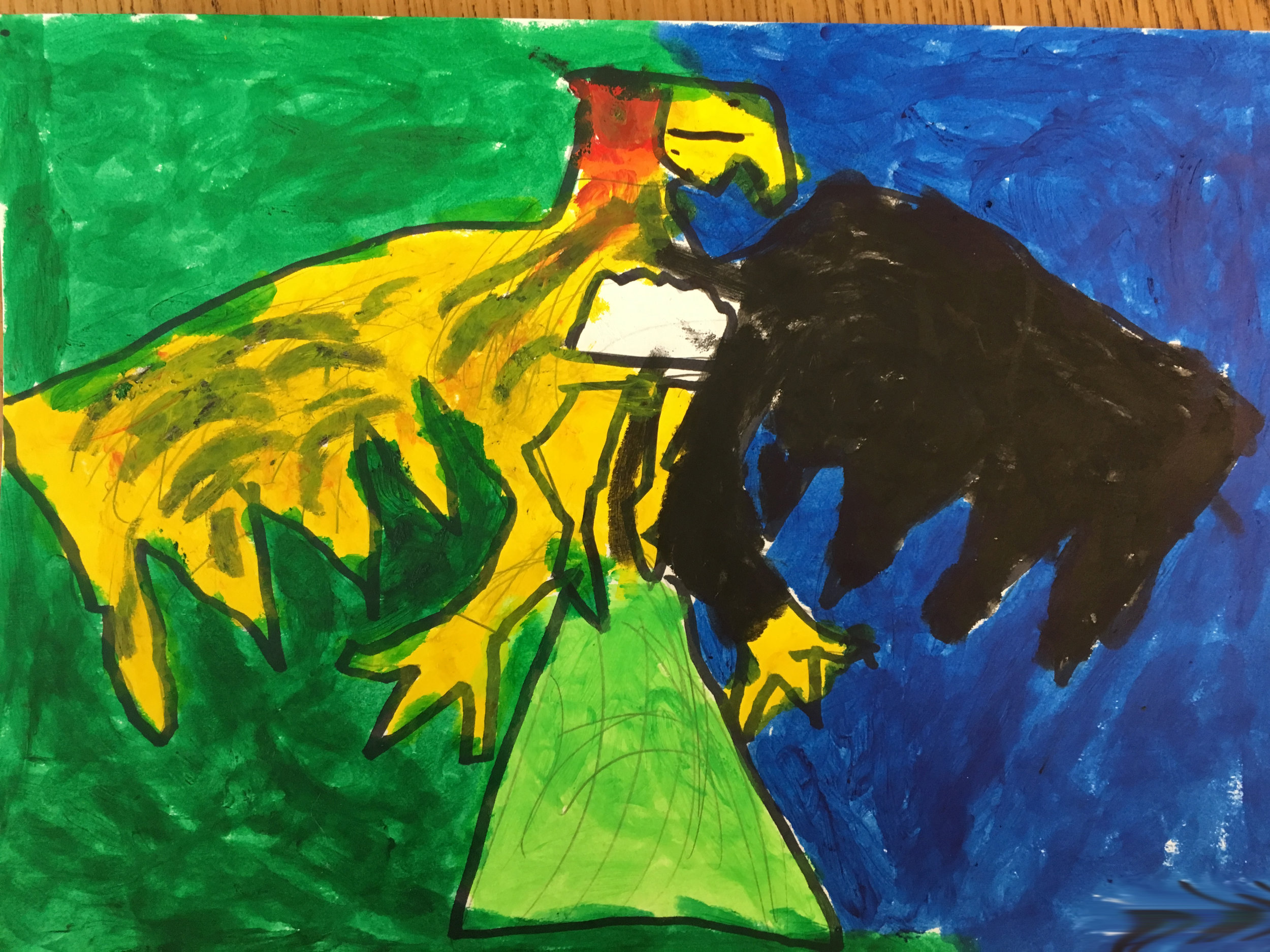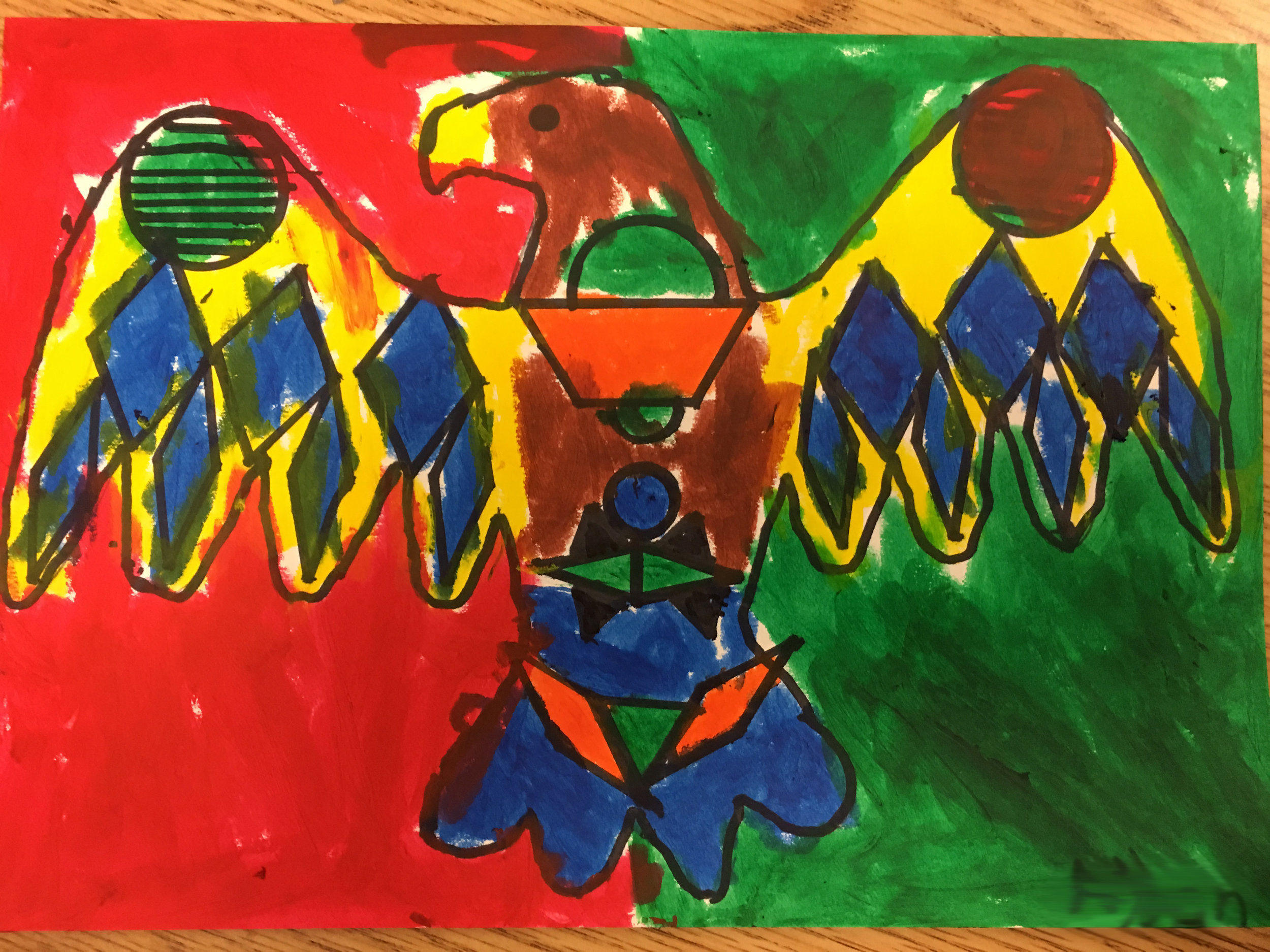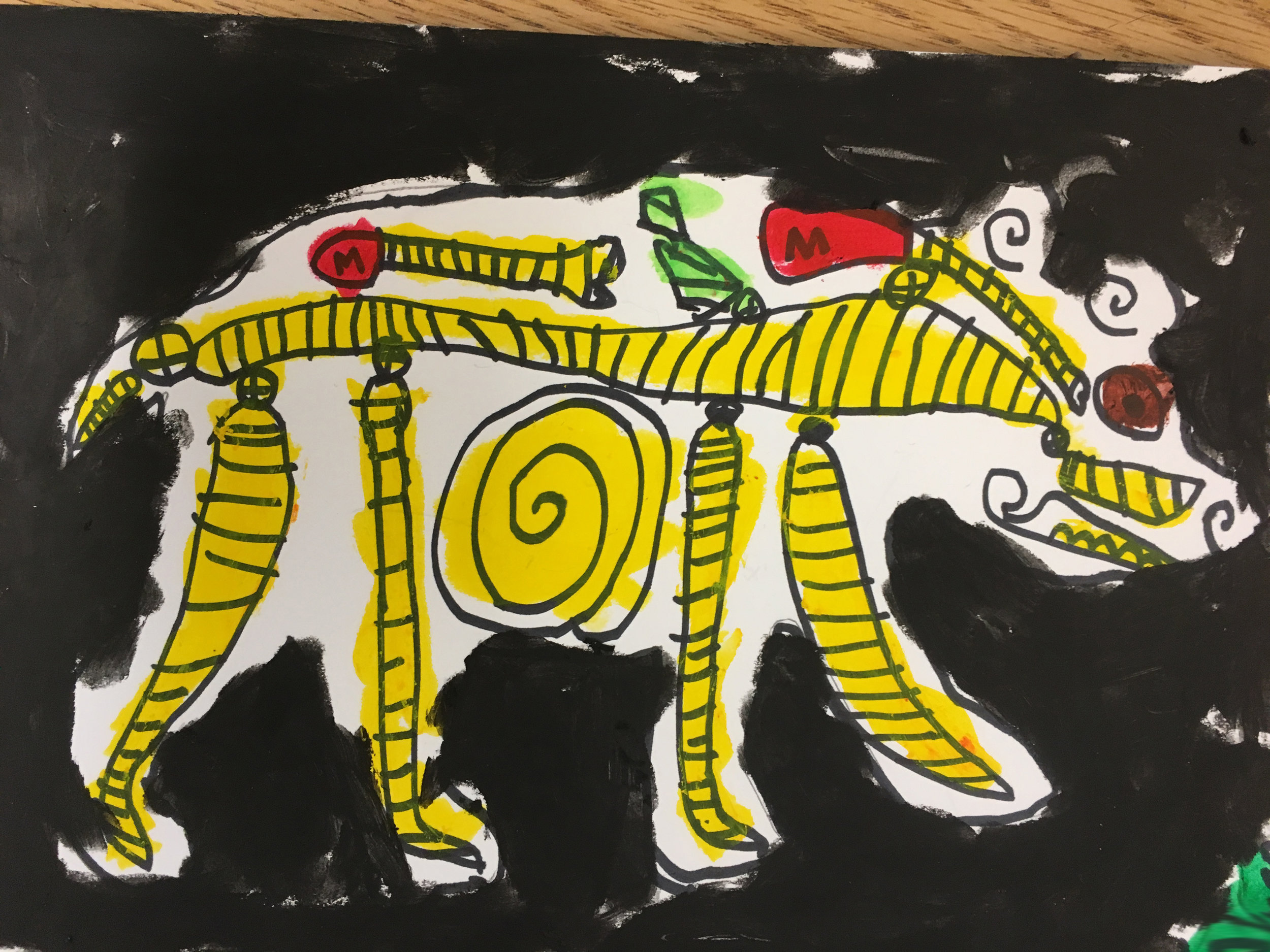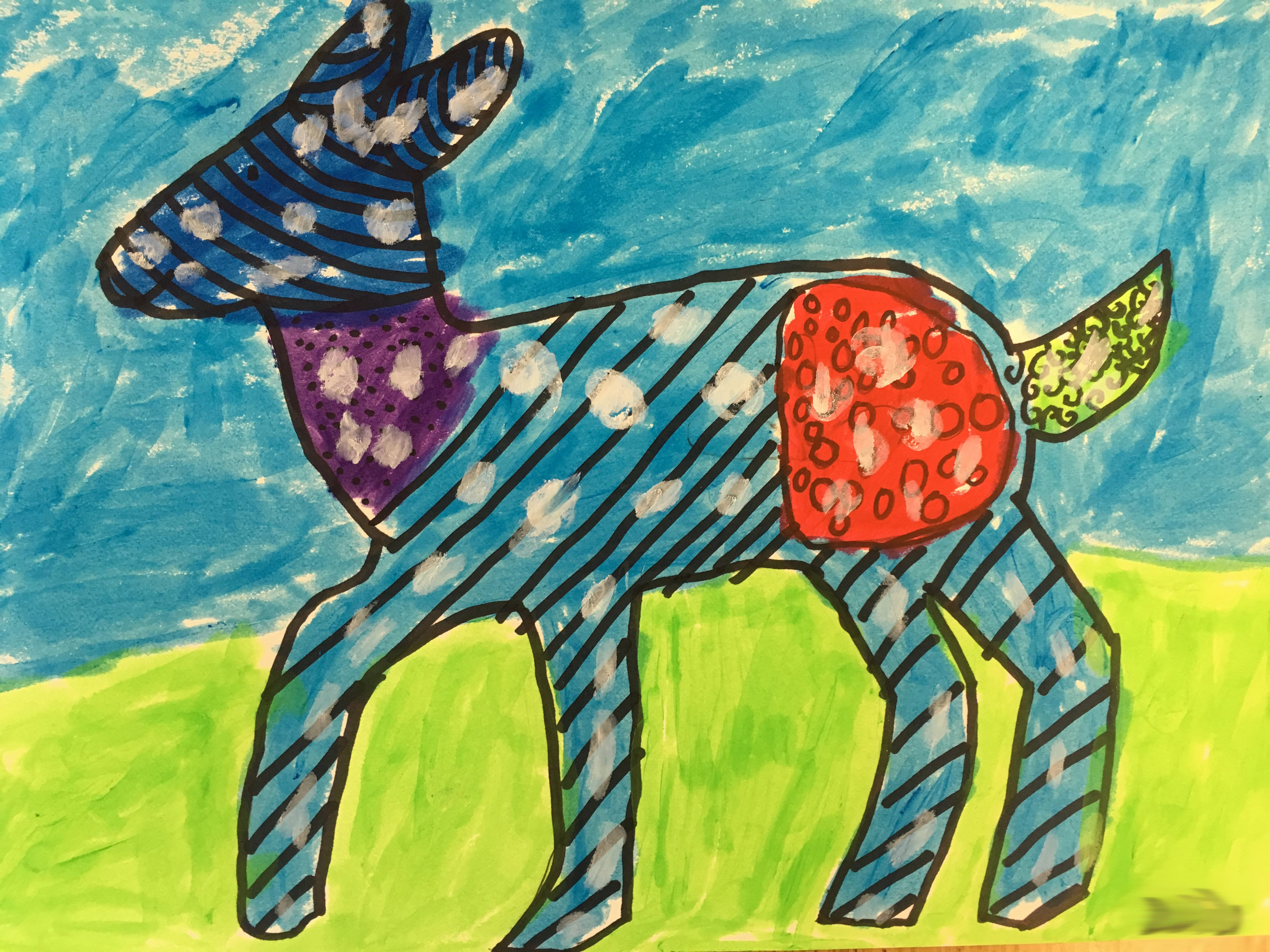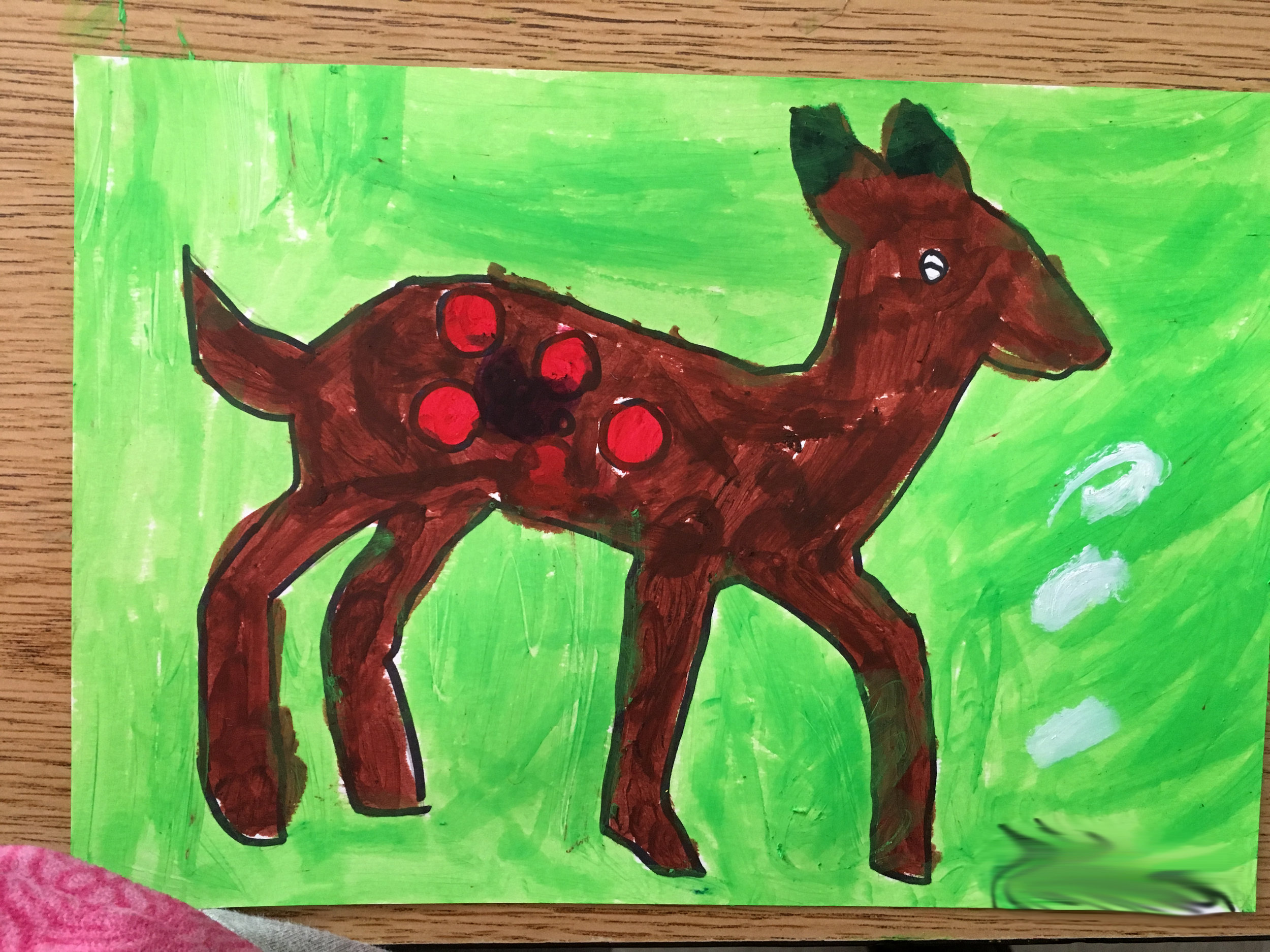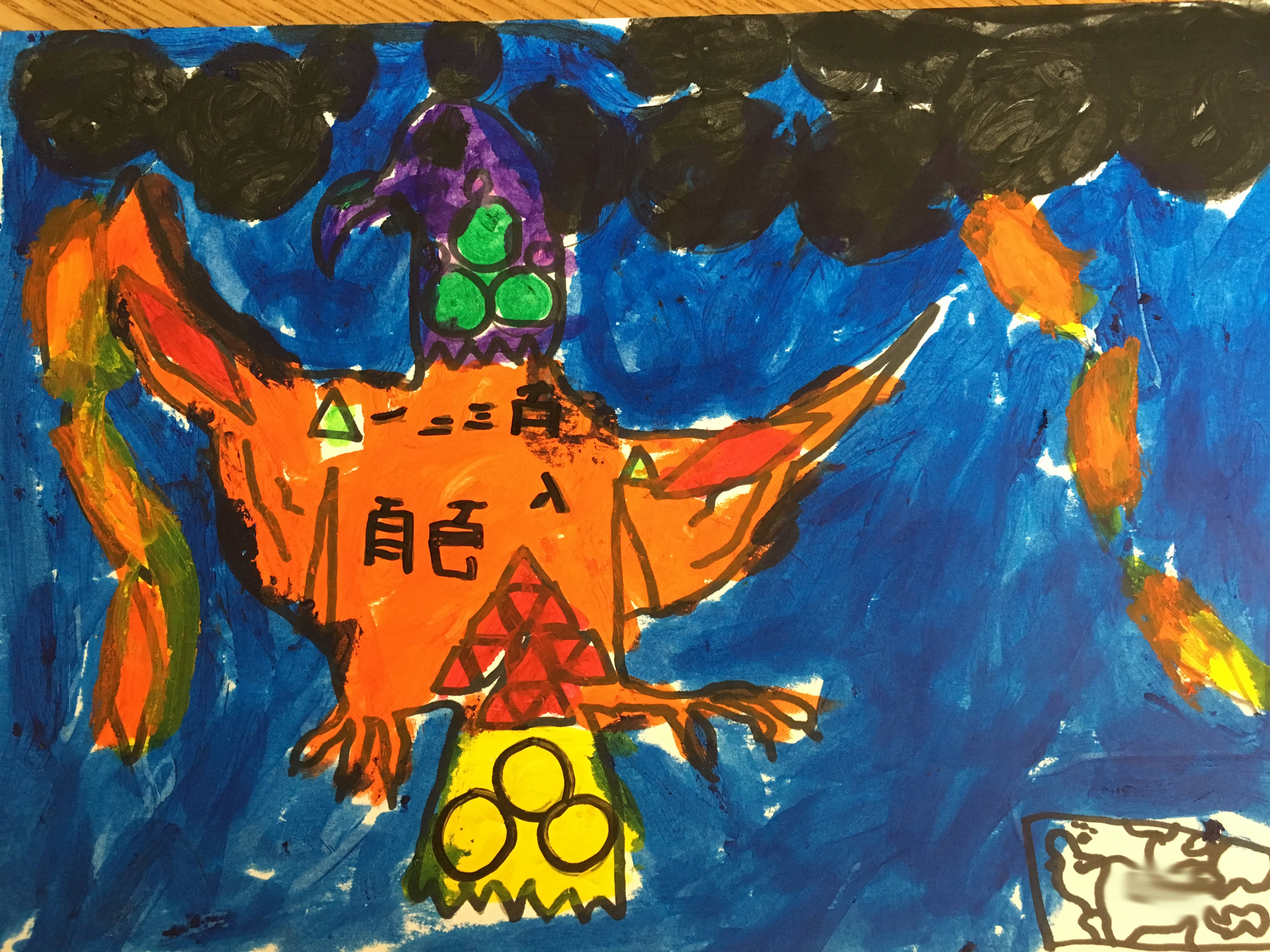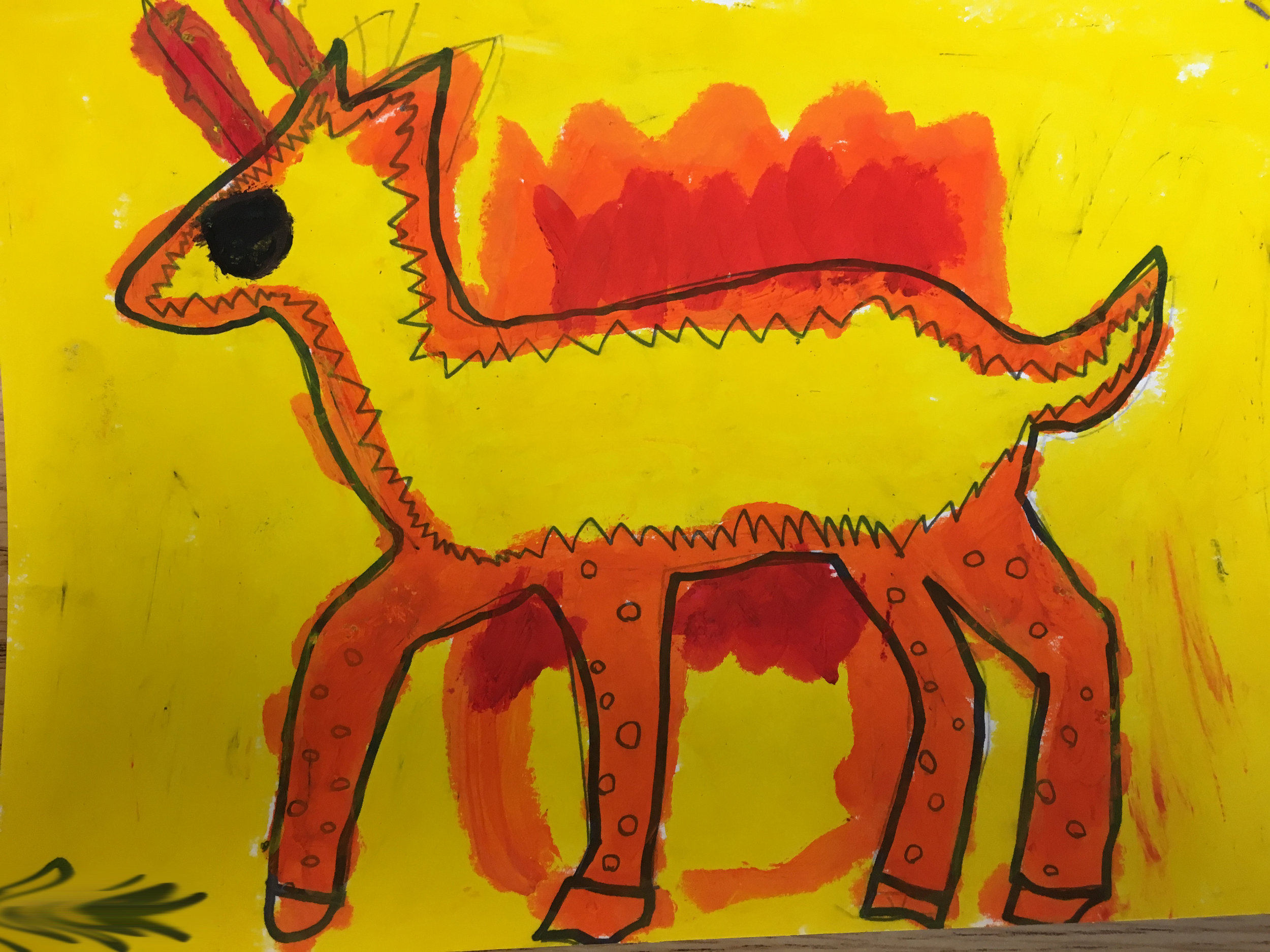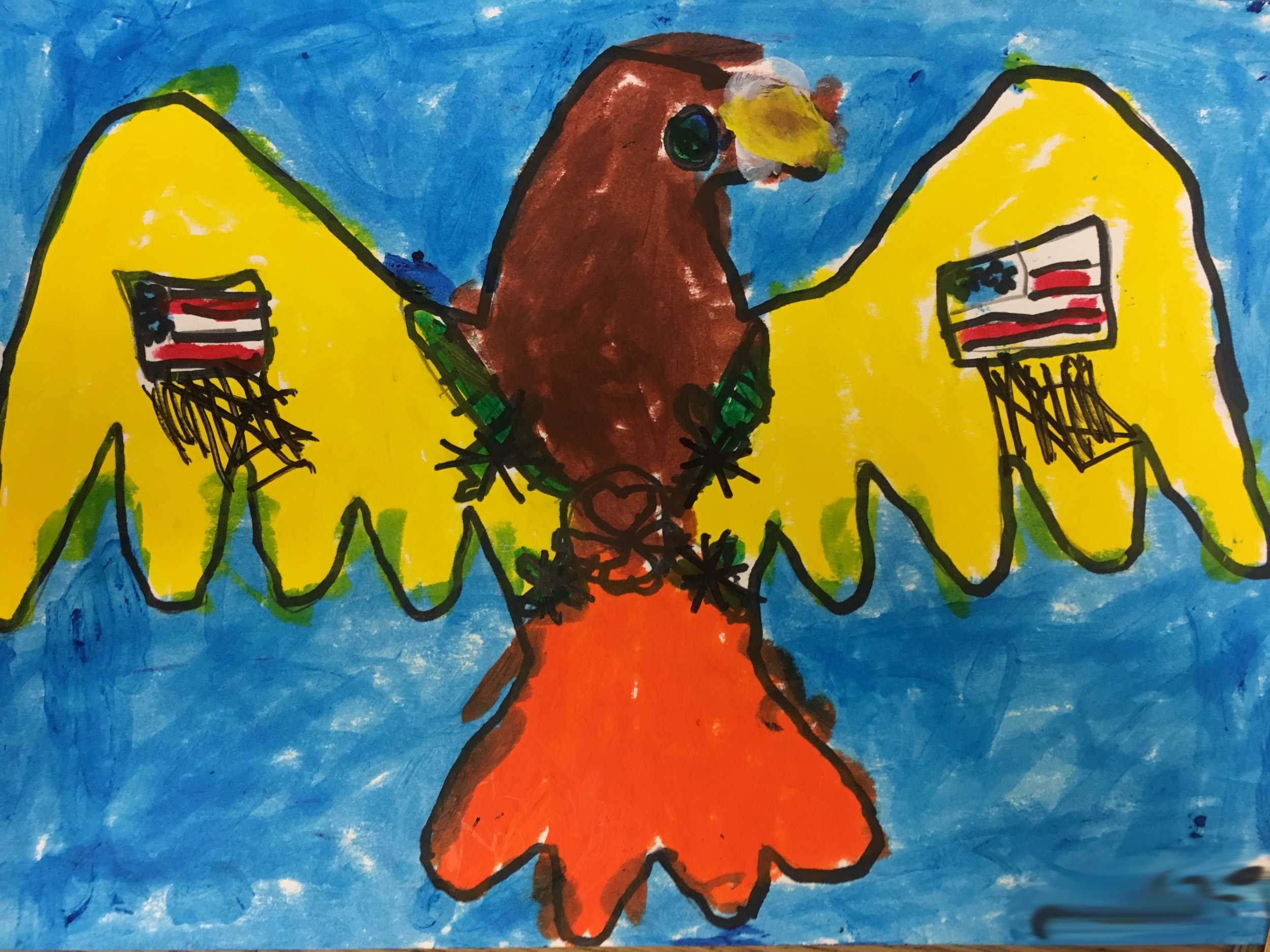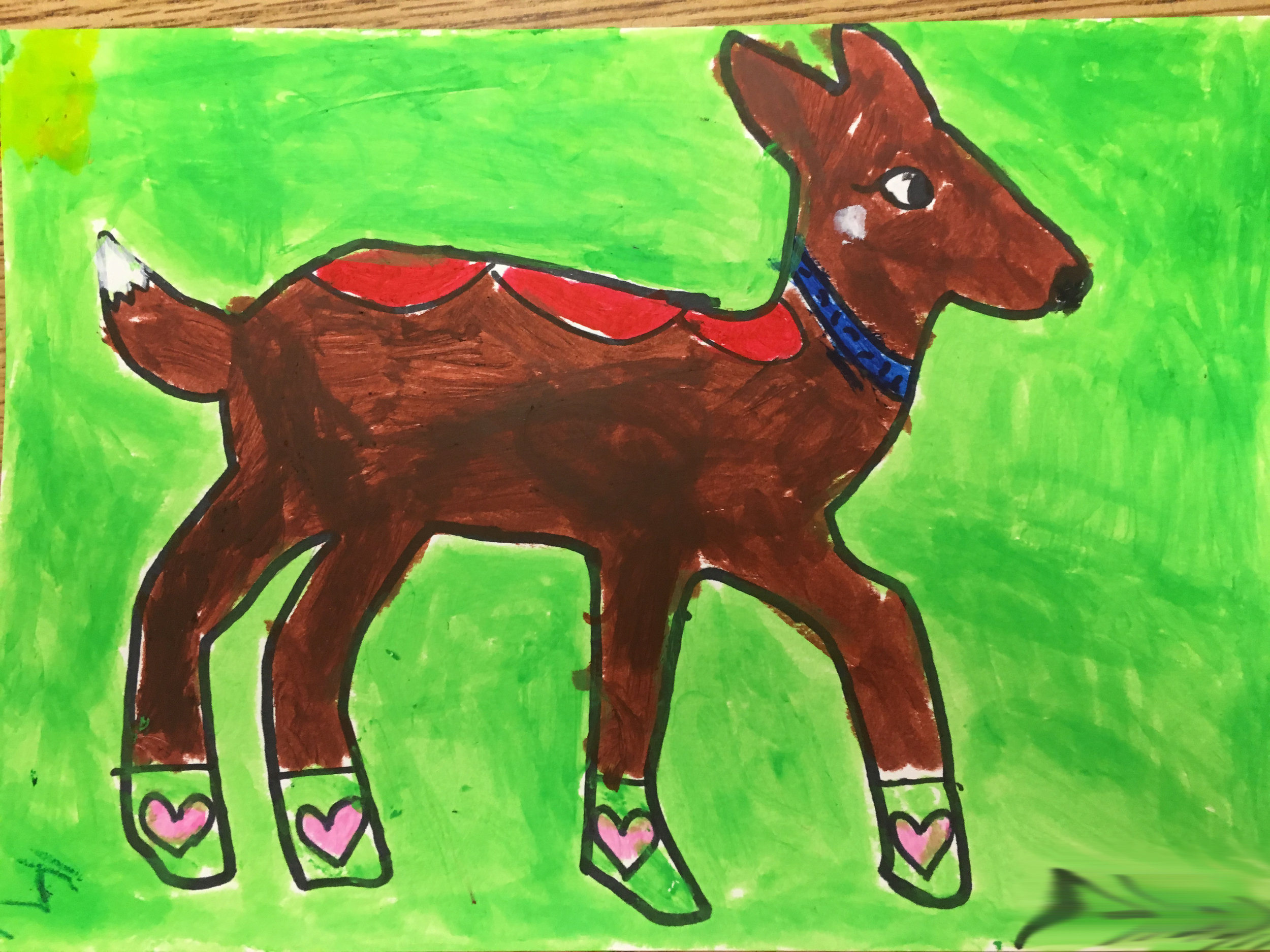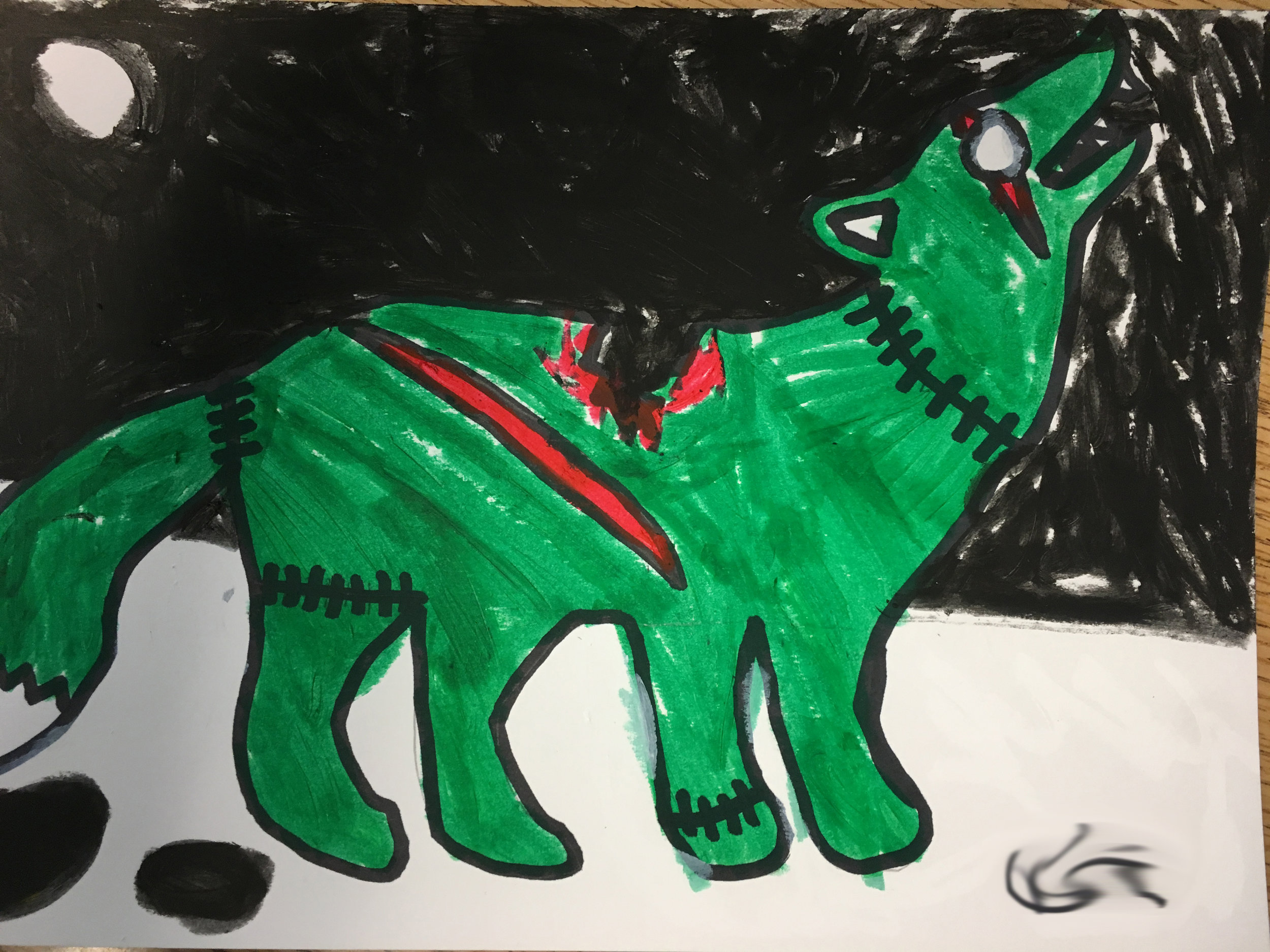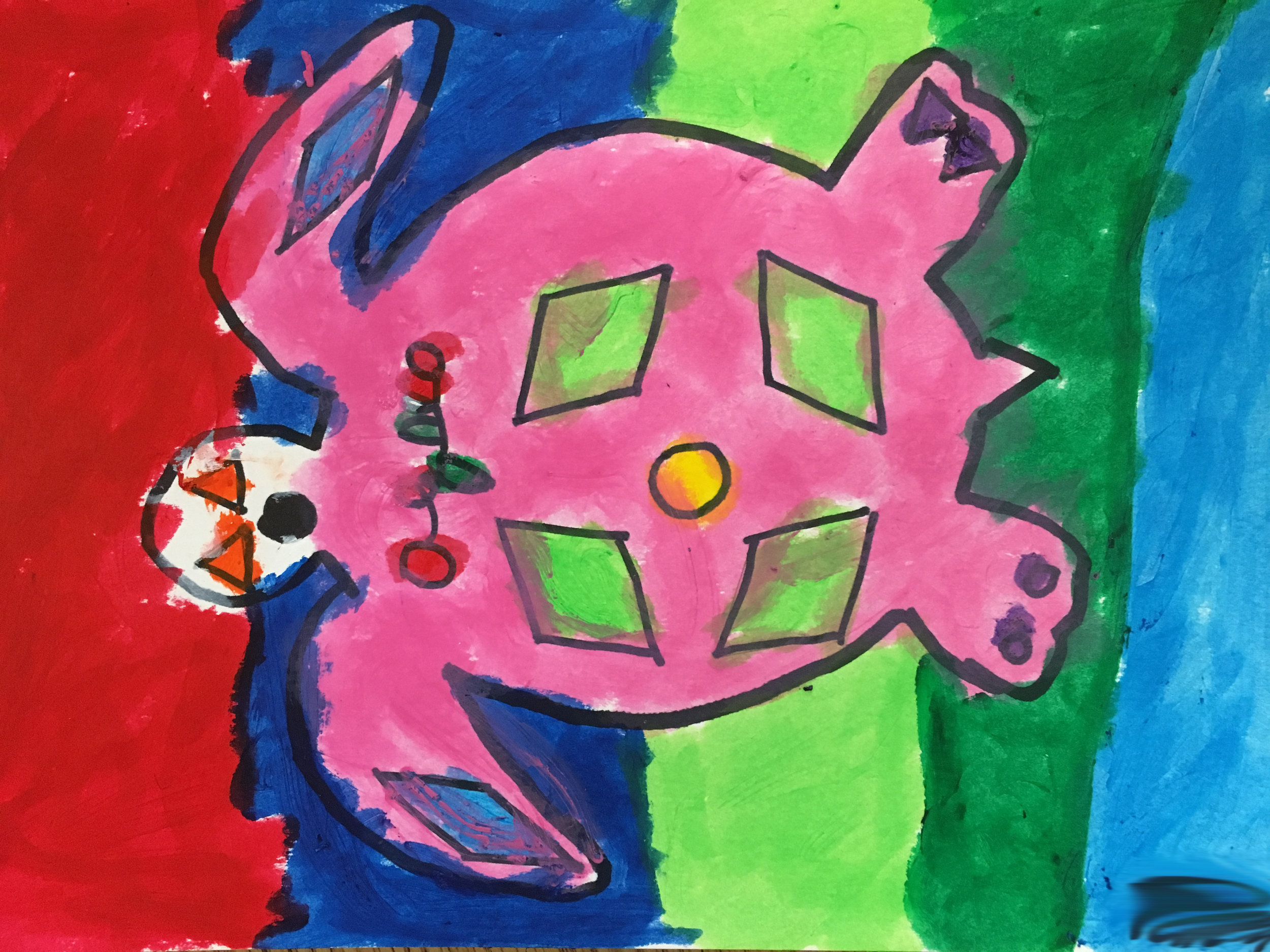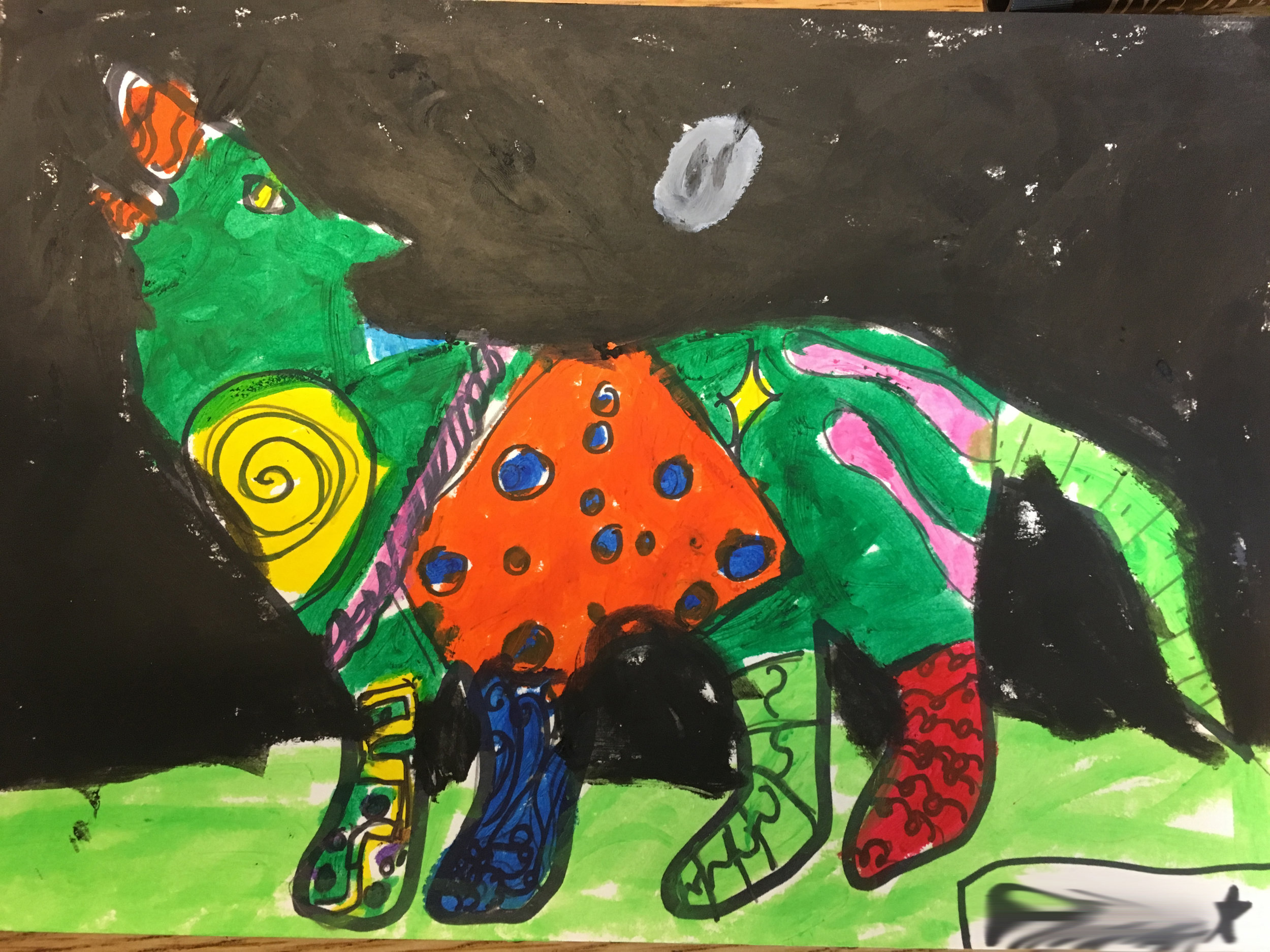OJIBWE ANIMAL PAINTINGS FOR 2ND GRADE
Grade Level or Age of Participant: 2nd Grade
School, Teacher and Classroom: EXPO Elementary – Ulla Tervo-Desnick
MCAD Teaching Artist: Evie Rozendaal
Number of Students: 27
VISUAL ARTS CONTENT OR STANDARDS
Code: 5.2.1.1.2
Arts Area: Visual Arts
Grade Level: 2
Strand: Create
Standard: Generate and conceptualize artistic ideas and work. Benchmark: Make art with various materials and tools to explore personal interests, questions, and curiosity.
CURRICULAR LINK/STANDARDS
Grade: 2
Strand: History
Substrand: Peoples, Cultures, and Change Over Time
Standard: The differences and similarities of cultures around the world are attributable to their diverse origins and histories, and interactions with other cultures throughout time.
Code: 2.4.2.4.2
Benchmark: Describe how the culture of a community reflects the history, daily life or beliefs of its people.
OVERVIEW OF PROJECT
Based on traditional Ojibwe animal paintings, students will create their own artistic renderings of the Ojibwe animal of their choice. They will pick which animal they feel represents them and use vibrant colors and abstract shapes to express their interpretations of these animals.
“BIG IDEAS”/ ESSENTIAL QUESTION(S)
Which Ojibwe animal do you relate to the most or aspire to be like?
How can you represent yourself in a drawing of an animal?
STUDENT OUTCOME OBJECTIVES
Students will:
Identify which animal they feel represents their personality or what they aspire to emulate
Design their own animal painting
PRIOR KNOWLEDGE
Ojibwe culture
Ojibwe animals and their personalities
Recommended reading: The Birchbark House by Louise Erdrich
EXAMPLES OF ARTWORK
Ojibway Animals by Jason Adair
Art by Ojibwe artists:
ADDITIONAL RESOURCES
Ojibwe Animals handout:
Front
Back
ASSESSMENT
Students will explain the reasons they choose the animal to represent themselves. Each student’s work should be unique to their own creative decision making.
MATERIALS
Playcolor Paint Sticks (one set for each table)
Black sharpies
Bristol paper (7” x 10”)
Animal stencils (optional)
Geometric shape stencils (optional)
LEARNING ACTIVITIES AND TIMING
1) Kids will be introduced beforehand to Ojibwe animals and have each picked an animal they wish to draw and to represent them. In addition, they will think about the characteristics of that animal they identify with.
2) Introduce Ojibwe art to kids and explain how the shapes have created an abstract representation of an animal. Show some work and examples. Ask the children what they notice about the animal. Paraphrase what they see. Talk about thick and varied outlines and the colored shapes and spaces in between. (10 min)
3) Explain to kids that they will be creating their own piece based off of this style of art. (10 min)
4) Hand out papers, art supplies, etc. (5 min)
a) Start by drawing the outline of the animal to fill the page. This can be done using a stencil or from the child’s freehand.
b) Add pattern and shapes inside and outside of the animal shape.
c) Add color to the entire drawing and background.
5) Let kids will begin their projects, reminding them of each step and giving them time to do each. Assist around classroom as needed. (20 min)
6) Announce clean-up approximately 10 minutes before the end of the lesson.
7) Have finished by the end of the hour. (5 min) (Students who have not finished will be given time to work on their pieces later.)
8) Reflect on the experience. Have students share their animal and why they picked the animal, and how that animal symbolizes them or their ideas. Finally, ask them why they decided to make the artistic choices they did with their pieces. Finally, ask them what they thought of the lesson. (10 min)

